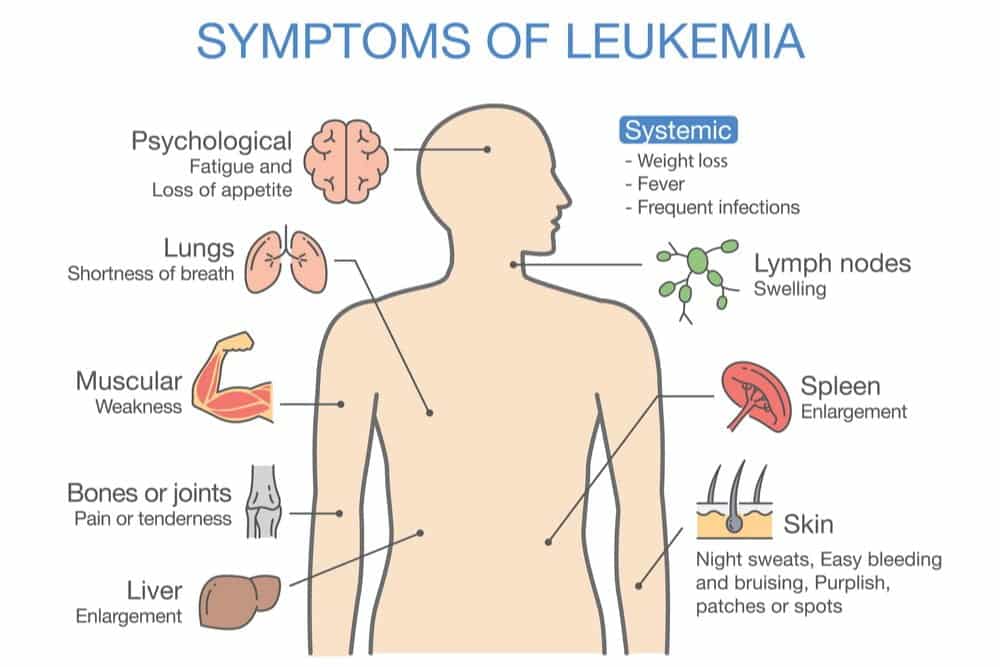Signs and symptoms

ALLs count as 80% of all childhood leukemias, and have a peak incidence of 4 years. AML affects older adults mostly; the incidence is higher during the 5th and 6th decade of life. CML peak incidences are seen in the 4th and 5th decade of life. CLL is the most common leukemia of the adults in the western world.
Leukemia patients generally have the following symptoms:
- Night sweats, fever of unknown origin with sudden unexplained weight loss for the last 5 to 6 months.
- Pancytopenia is another common symptom in the majority of leukemias. This is due to overcrowding of the bone marrow by abnormal cells. Conversely, they are decreased in the total blood count, and pancytopenia refers to a reduction in all cell lines at the same time.
- In some cases, we won’t have pancytopenia, but we do have anemia, lymphocytopenia, or thrombocytopenia. Each of these condition lead to a series of signs and symptoms.
- Anemia usually causes fatigue, pallor, breathing difficulties, lightheadedness, tachycardia and tachypnoea, postural hypertension, and generalized weakness.
- Neutropenia is a type of lymphocytopenia affecting our neutrophils, which make up the primary line against infection. These patients are at high risk of infections, and usually develop symptoms such as a sore throat, perianal pain due to infection, and in severe cases sepsis.
- Thrombocytopenia refers to decreased platelets in the blood count. It can lead to generalized bleeding tendencies such as purpura, easy bruising, epistaxis (bleeding from the nose), and bleeding gums. On examining the eye, fundoscopy shows fundal hemorrhages. There is increased bleeding and clotting time is increased. There may be also gastric and genitourinary bleeding.
- The expansion of the bone marrow leads to destruction of the surrounding bone tissue, which causes bone pain.
Chronic leukemias are clinically silent in the early phase of the disease, with a sudden onset after months to years. CLL is so insidious that it is often detected during routine examinations. CML is seen more commonly in males, and its clinical features are classified according to the course of disease. During the chronic phase there is leukocytosis, blast cells are less than 10% in bone marrow, and there is little thrombophilia. Then, the accelerated phase starts, and there is leukocytosis, splenomegaly, thrombocytosis, and 10-20% blast cells in the bone marrow. Finally, the last phase features a blast crisis where there is more than 20% increase in blast cells, extra medullary hematopoiesis, and hepatosplenomegaly. Others symptoms include gingivitis, gingival hyperplasia, and abdominal discomfort. Splenomegaly may be so huge that it can be palpated beyond the costal margin Lymphadenopathy can also be seen but it is unusual in leukemias.
Compared to this, acute leukemias have an abrupt or sudden onset, along with the general symptoms of leukemia they may show CNS manifestations such as headache, vomiting, and nerve palsies due to meningeal spread of leukemic cells.

